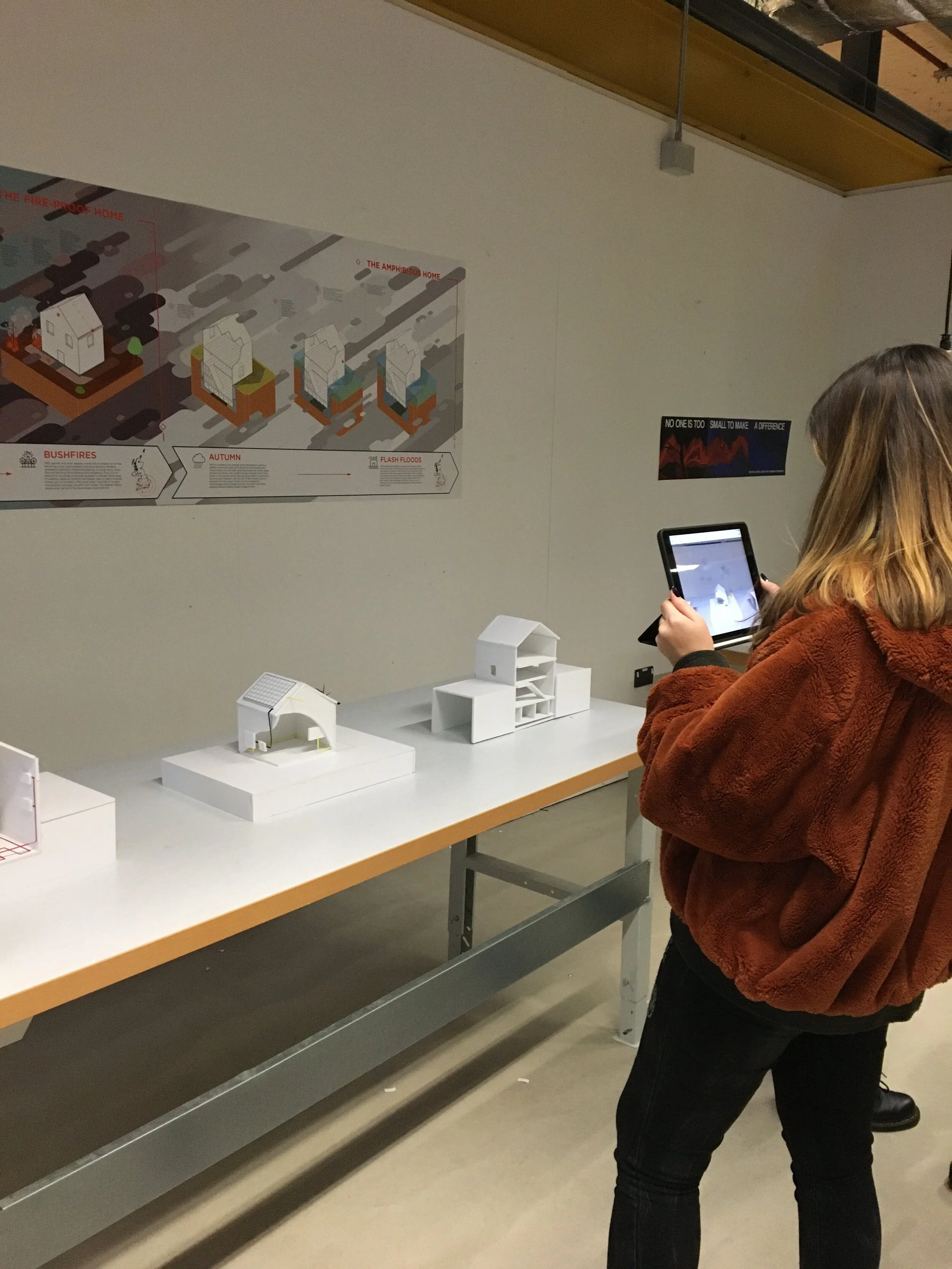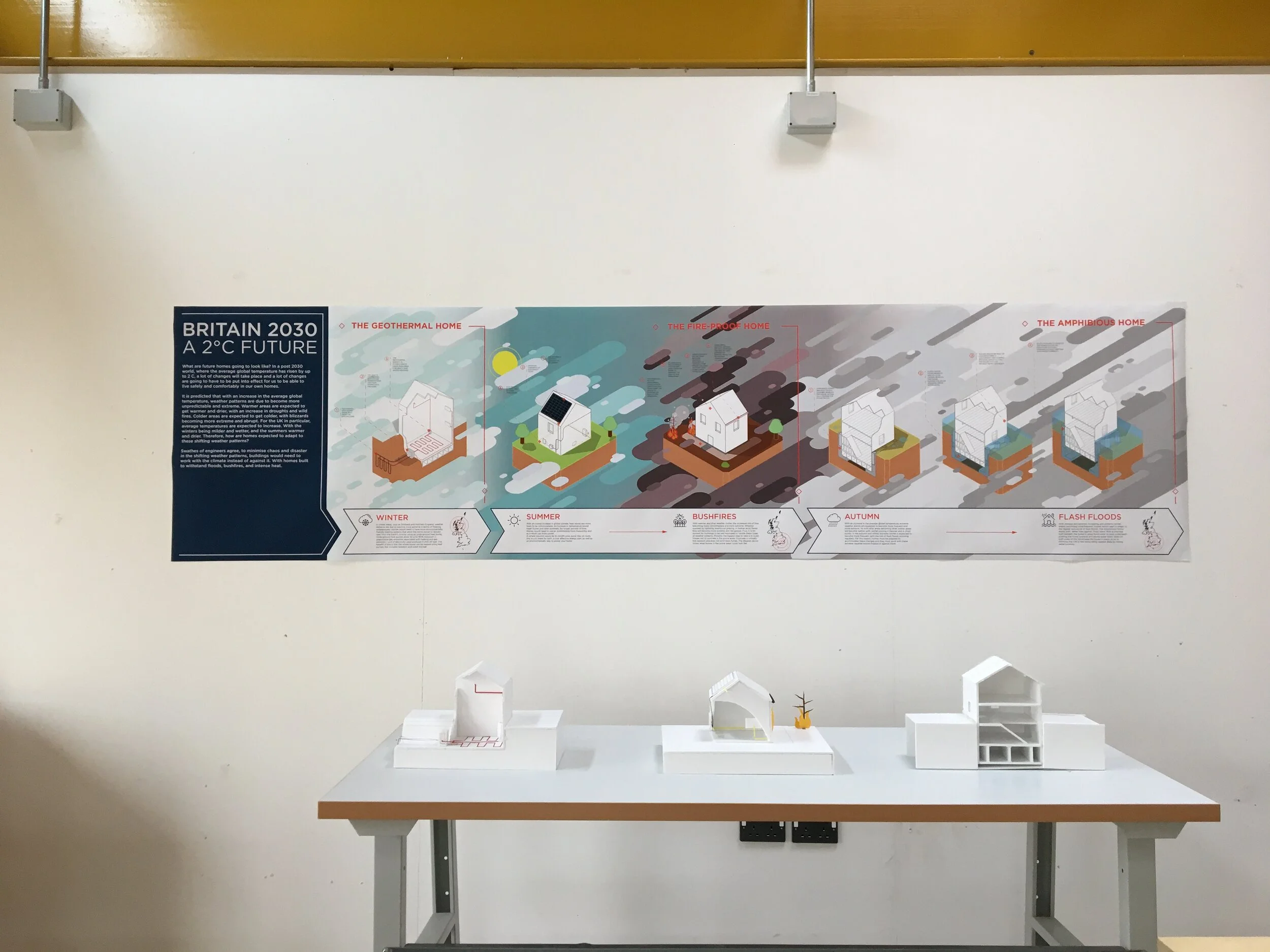
Britain 2030
Bath Spa University, 2019
Illustration, Print, Editorial, Model Making
Adobe Illustrator, InDesign, After Effects, Aero.
The Problem
How do you visually communicate the urgency of the Climate Crisis without alienating the audience?
The Solution
By showing people what the climate crisis would actually look like in the context of their most personal environment; their homes.
Britain 2030 aims to show how homes would be affected, and how they would need to be built in order to survive the climate crisis. By presenting factual, scientifically proven information, this project aims to inform people as to how to better optimise a home for being sustainable and how to survive the shift to more extreme and unpredictable weather patterns.
By using a combination of 3D models, AR, and a large-scale mural, Britain 2030 creates an immersive experience that not only seeks to change habits, but also to inform the daily lives of individuals.

Fighting climate change through acceptance
So much of the conversation on climate change is about the doom and gloom behind it. How, in not accepting and implementing changes to our lives, we are sentencing ourselves and future generations to an unstable future.
We all know that’s what’s going to happen. Yet, nothing has changed. People still consume copious amounts of plastic, they still support animal agriculture, and they still buy products that contribute to the emission of greenhouse gases.
Unfortunately, climate change is inevitable. So, how do you prepare people? And in the process, how do you convince people to implement better practices to limit their carbon footprint?
By confronting them where they feel most at home: Their homes.

The Research
I looked at the best practices for building a home that could fight against the changing weather patterns. I categorised these as the most likely issues to hit the UK’s usually temperamental climate, with a bigger emphasis on the rainy seasons.
Though these engineering feats are in no way my own, I felt shocked as to how these solutions weren’t common knowledge. From an amphibian home, a home that literally floats in water, to a fire proof home that can withstand bush fires. To me, these design solutions felt important and a potentially easy fix for a lot of the issues most homes face. As a designer, I took this project as an opportunity to bring to light these solutions as a way to inform the public as to how they can better prepare for the future.

The Mural
Approaching this project, I wanted to create an infographic that could correctly represent the information presented. Given the scale of the mural, I needed to make sure that the information would be both readable and visually appealing so as to not overload the viewer. At such a large scale, it’s easy to make text either too large or too small. When it comes to diagrams, specifically, it’s important to make sure that the visuals don’t distract from the important information that needs to be communicated.
For this reason, using an isometric illustration style felt like an appropriate solution. Besides being fitting for an architectural model of a house, it would also work well with the labels that would go along with it.

Making it Interactive
In the process of creating this show, I was confronted with the question; how do you get people to engage with a subject as complex as eco-friendly homes and the changing weather patterns?
Using AR, I created a mixture of traditionally made building models with digital labels. Using Adobe Aero, attendees would take the iPad and ‘scan’ their environment, walking around the models and reading the labels for themselves. Perhaps seeing the models in real life could influence their decision making, allowing them to engage with the subject matter and absorb the information being presented to them.



